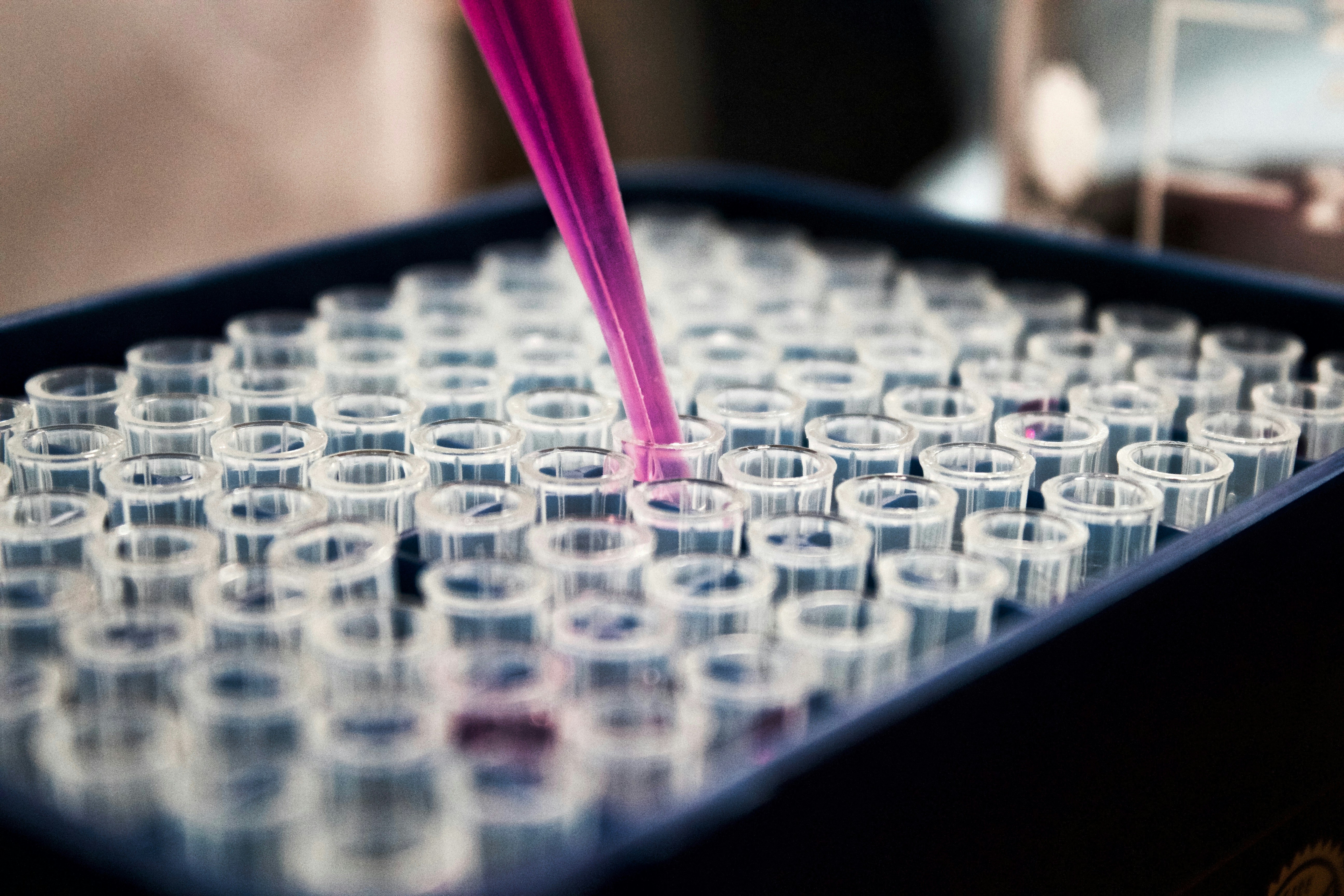
The 12-part system optimizes your process and eliminates dependence on serum, proprietary serum replacement products, other extracts, and even recombinant factors and enables the transition to chemically-defined culture for any cell type cost-effectively while retaining cell health and performance.
A new service by Van Heron Labs
VHL is putting its process optimization knowledge to work towards addressing key challenges in bio-manufacturing and cell and tissue culture through a new service aimed at addressing culture challenges and process optimization from an entirely new angle.
From working with diverse partners across bio-pharma, precision fermentation, and alternative protein to optimize their bioprocesses using Van Heron Labs’ core platform, which uses multi-omics data to optimize cell feed and media formulations by beneficially reprogramming cellular metabolism, the Van Heron Labs team has become keenly aware of the challenges posed by using non-defined and expensive media components and the difficulties of eliminating them.
The VHL core platform uses bioinformatics analysis to determine the nutrient substrates cells need for optimal metabolism, the primary effect is improving yields, and a secondary benefit for those working with cell lines is the elimination of components like serum. VHL optimizes basal media by providing the small molecule (macro and micronutrient) profiles required by a particular cell type; however, often, basal media is supplemented with serum, other extracts composed of a complex mixture of both large and small molecules like proteins, or recombinant factors.
While the Van Heron Labs’ custom supplements can do much to eliminate undefined components on their own (up to 70% in some cases for mammalian cells and up to 95% for microbes), it’s not always a complete solution and not the primary purpose of the technology.
“I felt a bit helpless watching our partners struggle, knowing that our platform could only do so much, and at the same time, knowing exactly what they needed to do.
I had a folder on my laptop with an outline of all the actions needed to reduce or eliminate undefined and expensive components from the culture regime while retaining cell health and performance.
In speaking with a colleague, it occurred to me that instead of leaving that folder virtually unused, I should allow others to access that knowledge.”
-Dr. Rebecca Vaught, Founder and C.E.O.
“The Van Heron Labs mission is ultimately to use our platform and know-how to further catalyze the bio-economy and help people and the planet, we feel that deploying Ser-X advances that mission.”
-Dr. Alec Santiago, Co-founding partner
Transitioning to chemically defined culture is particularly important for cell-based proteins, but it’s also important for academic research, traditional biotech, and therapeutics testing, among other endeavors. Using something like 10% fetal calf serum for cells used to assay human conditions such as cancer or COVID-19 creates a micro-environment unrepresentative of target in-vivo physiological conditions of interest. For instance, cancer cell metabolism is extremely heterogeneous (across subjects and locations within tumors), but with the addition of fetal calf serum, glucose metabolism will become altered, regardless of the native cellular conditions, confounding assays, or therapeutics testing (a similar circumstance is also potentially problematic for COVID studies given the insulin susceptibility of ACE-2). Further, fetal calf serum transitions cells into an “embryonic state,” which may be an issue for aging-related studies. Finally, most human serums are derived from male donors, thus for any work on female cells or tissues (where gene expression can differ by up to 40%), there is a risk of introduction of sex-specific effects.
Ser-X is a 12-part series of techniques, recipes for media supplements, infrastructure recommendations, and a penultimate implementation pipeline that will reduce or eliminate serum, replacements, extracts, and even recombinant factors from any type of cell system while retaining cell health. Ser-X can be tailored to specific biological needs or process demands. The Van Heron Labs Ser-X team will also support their partners through implementation and scale-up.
Van Heron Labs also cautions, however, that while Ser-X can work for any cell type, it’s not an appropriate strategy for everyone.
“There’s a reason why many researchers and companies are still using non-chemically-defined media. It’s a huge, often expensive, challenge. Companies will have to put resources towards the implementation of the strategies we suggest for the best results.”
-Dr. Rebecca Vaught, Founder and C.E.O.
Even given this, Van Heron Labs feels confident that those who do take the necessary steps will reap the rewards.